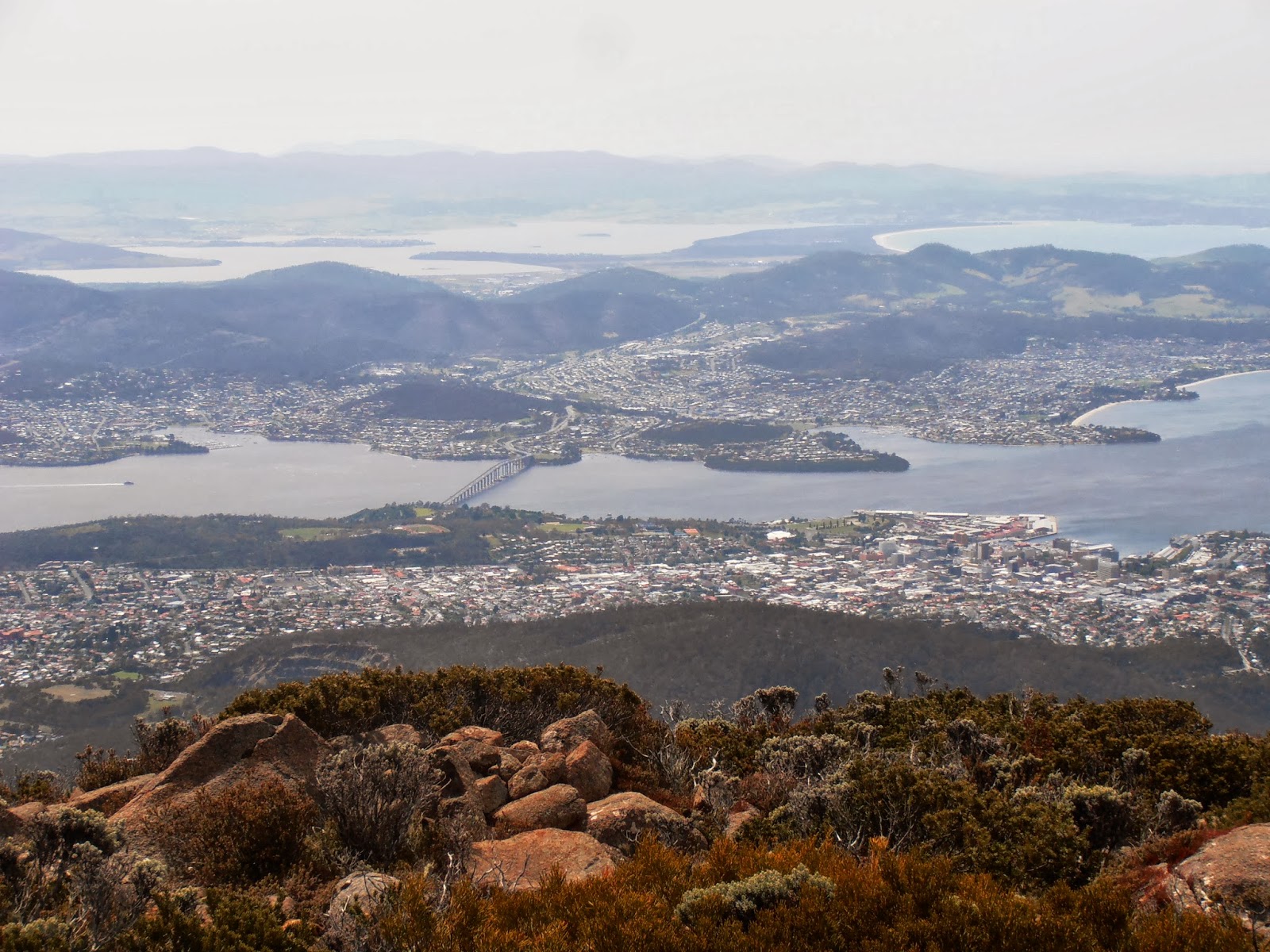Sunshine on rising and better still, a clear sky all about the top of Mt Wellington. Chris paid for a further day here at the caravan park, and I had fought another good fight with the laundry and midget sized clothes line, all of which put me in a foul mood apart from being very exhausting. That done, we set off for the summit along with everyone in Hobart not attending the Salamanca Markets; masochistic cyclists, walkers and sightseers. The narrow road was so very busy, some drivers a nervous wreck, an absolute menace on the road.
Up at the summit the winds were wilder than our
last visit but the views were truly splendid; far to the distance in all directions,
north east to the Wilderness and snow covered mountains, the river and wide and
spidery estuary of the Derwent east and south. Checking online I see the winds
were blowing at just over forty kph gusting at 80 kph while we were up there,
the gusts ten kph more than they had been while I was battling the washing on
the line. We later learned that some summer days do bring still conditions to
the summit, but they are few and far between. We were glad we went back for
another go to really appreciate the views over this lovely area.
 |
| City view from Mt Wellington |
Until the early 1940s residents who wanted to
cross the river had to either catch the ferry or travel upriver to Bridgewater
and back. The deep and wide Derwent Estuary which is up to forty metres deep in
places, limited the type of bridge that could be constructed. In 1943 an
unusual concrete floating bridge was opened and cars were allowed to cross for
the first time. As the population of the eastern shore grew, it was realised
that a wider and more conventional bridge had to be built. Construction began
and in 1962 the Tasman Bridge was opened to traffic.
Nineteen years later, Hobart became a divided
city once more. In January 1975, the Tasman Bridge was struck by the bulk ore
carrier, Lake Illawarra bound for the
Electrolytic Zinc Company at Risdon. Twelve people died, including seven crew
members and four cars plunged off the broken span. The debris of the ship and
bridge at the bottom of the deep river prevented the pier being rebuilt in its
original location. The off-centre pier and span is a constant reminder of where
the disaster occurred. A second bridge, the Bowen Bridge was also built, this
time upstream from the Electrolytic Zinc Company.
 |
| Royal Tasmanian Botanic Gardens |
Here in the garden are a few rather special
features; the Subantarctic House where
one can experience and see the flora of windblown Macquarie Island, a place
that Chris was keen to escape; he does not like the cold. And the rather
bizarre walled structures still standing erected by convict labour under orders
from Governor Arthur, walls with central heating to nurture the fruit trees
brought from England. He had not realised that Mt Wellington protects Hobart
from the cold winds; we read the virtues of the mountain when we were at the
summit.
Of course it has not been warm at all during
our stay here, or at least not until today. As I write this the temperature is
still at about 26 degrees, very pleasant indeed, and while we will not see a
repeat of this for a while, according to the forecast, the night temperatures
look like they might not drop below about 10 degrees. This I can live with.
The last Bledisloe Cup rugby match is about to
kick off in Dunedin, New Zealand so I had better put my sport’s fan “hat” on
and join my husband in front of the box. The All Blacks will need someone to
cheer them on, although after winning the first two of the three games, it is
all rather academic.
We will head off again in the morning satisfied
to have seen everything in Hobart that caught our fancy. New places are always
exciting!
No comments:
Post a Comment